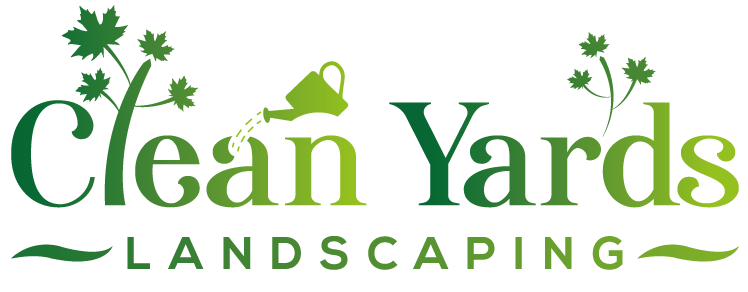More Embrun Blooms: Easy Summer Deadheading Secrets
Want a vibrant garden without the constant upkeep? Deadheading is key! Need help keeping your Embrun garden beautiful? Request your free quote today!
Get a Free EstimateQuick Deadheading Wins:
- Deadheading = removing faded flowers before they set seed.
- Result = encourages more blooms, longer flowering season.
- How = Pinch soft stems, snip tougher ones just above new growth/leaves.
- When = Regularly, every few days during peak season.
- Why = More flowers, tidier look, healthier plants.
Introduction: Hello Embrun! Let's Talk More Blooms & Less Effort
Hey there, Embrun! Dreaming of a garden that’s the envy of the neighbourhood, maybe even catching the eye of folks driving through from nearby Russell, but *without* sacrificing your entire summer to back-breaking labour? Yeah, us too! Here in the wider Ottawa area, we cherish our summers. We all love seeing those vibrant flowers pop in our landscaping, adding curb appeal and cheer, but wouldn't it be nice if they stuck around longer with just a *little* nudge from us?
Well, good news! There’s a super easy gardening trick that helps you get *more flowers* with *less overall effort* later. It’s called deadheading. Sounds a bit grim, maybe? Don't worry, no flowers are actually harmed in the long run! It’s simply the practice of snipping off the old, faded blooms *before* they start making seeds.
Think of it like this: you're gently telling your flowering plants, "Nope, the party's not over yet, keep the pretty flowers coming!" This little snip encourages them to redirect their energy into producing more gorgeous blooms instead of focusing on seed production. It keeps plants looking tidy and prevents them from thinking their job is done for the season. It’s one of the simplest, most effective ways to maximize your summer colour and keep your garden beds looking fantastic with minimal fuss. Ready to get more bang for your bloom buck?
What in the Bloom is Deadheading (And Why Should You Care)?
Okay, let's tackle this "deadheading" thing. Sounds a bit dramatic, right? Like something out of a gardening mystery novel! But trust us, it's way less spooky and *way* more beneficial for your beautiful blooms here in Ottawa.
So, what is deadheading? Simply put, it's the gardening task of removing faded or dead flowers from a plant before they produce seeds. Think of it like giving your plant a little trim – you're snipping off the old stuff to encourage new growth, just like a haircut can make your hair feel healthier! When a flower fades, the plant's natural instinct is to pour all its energy into making seeds for the next generation. Deadheading cleverly interrupts this process. By removing the spent bloom, you tell the plant, "Hold on! The show's not over yet!" This encourages it to redirect its energy back into producing more lovely flowers.
Why should you care, especially in places like Greely or Nepean? Well, the benefits are pretty bloom-tastic!
- More Flowers, Longer Show: This is the big one! You get more blooms throughout our precious Ottawa growing season. Instead of fizzling out early, plants like petunias, zinnias, marigolds, and roses keep pushing out new flowers when regularly deadheaded.
- Tidier Garden Beds: Let's be honest, wilted, brown flowers aren't the prettiest sight. Deadheading keeps your landscaping looking neat and vibrant. A clean garden bed also complements a healthy lawn, especially if you're already focusing on techniques for achieving thicker grass through overseeding.
- Healthier Plants: Removing decaying flowers can actually help prevent fungal diseases and discourage some pests. Less rotting stuff means fewer problems, which is crucial if you're trying to bounce back from dealing with garden pest damage after fall. Healthy plants start with healthy roots, and ensuring good airflow and nutrient uptake through practices like understanding the importance of lawn aeration for soil health also contributes to plants that respond well to deadheading.
- Focus Energy: Some plants, especially annuals, will stop blooming altogether once they set seed. Deadheading ensures their energy goes into flowers, not seeds you might not even want. Even if you've wisely chosen spring rabbit-resistant plants for garden protection, deadheading helps them look their best too.
How to Do It: For most soft-stemmed plants (like petunias or marigolds), you can often just pinch off the faded flower and its little stem below the bloom with your fingers. For tougher stems (like roses or coneflowers), use clean pruning snips or scissors. Cut back the stem to just above the next set of healthy leaves or a visible bud. It’s usually best to remove the entire flower head and its stem, not just the petals.
It’s a simple task that pays off big time with more colour and healthier plants throughout the summer and into the fall. If adding another garden chore feels like too much, remember that expert help is available for various garden maintenance and landscaping services. But giving deadheading a try is definitely worth it for a more beautiful Embrun garden! Find out more about our approach on our about us page.
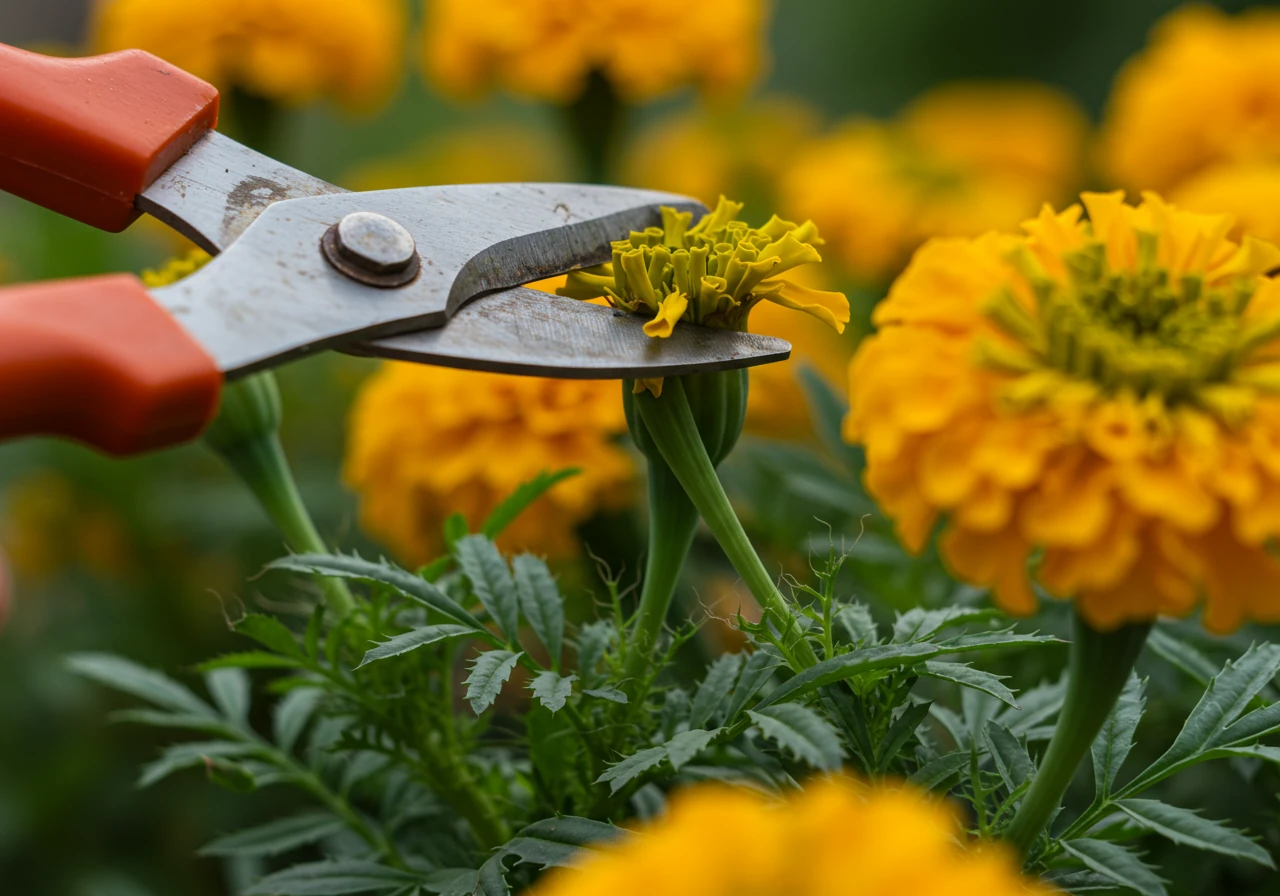
Snip, Pinch, Prune: Your Deadheading Toolkit & Basic Moves
Okay, let's dive into the nitty-gritty of deadheading! You don't need a fancy arsenal for this garden task. Think less "major operation" and more "quick spa treatment" for your plants. Here’s the lowdown on the tools and techniques to keep your Ottawa garden blooming beautifully.
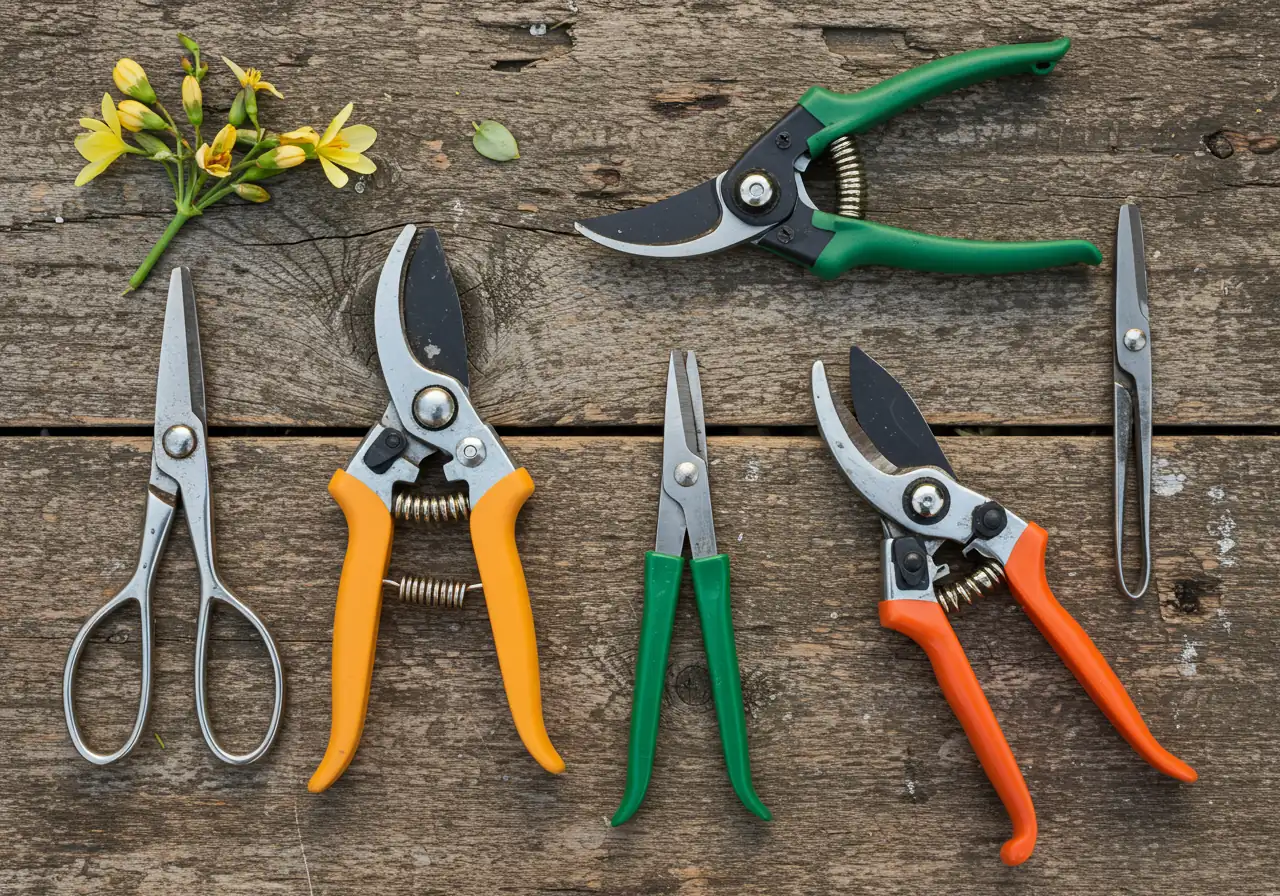
Your Deadheading Toolkit: Simple & Effective
You likely already have what you need. The main tools for the job are:
- Your Fingers: Yep, good old-fashioned pinching power! For soft-stemmed flowers like petunias, pansies, or coleus, your thumb and forefinger are often the best tools. It's quick, easy, and lets you really feel where the natural break point is. Think of it as your built-in, eco-friendly gardening multi-tool!
- Gardening Snips or Scissors: For flowers with tougher, woodier, or thicker stems (like roses, coneflowers, rudbeckia, or zinnias), you'll want something sharper than your fingernails. A clean pair of small gardening snips (sometimes called floral snips) or even sharp household scissors dedicated to garden use works perfectly. Bypass pruners (where blades sweep past each other like scissors) are usually preferred over anvil types (which crush) for cleaner cuts on living stems.
- A Bucket or Bag: Optional, but handy for collecting the spent blooms. Tossing them directly into a bucket saves cleanup time later and keeps your garden paths tidy. Proper disposal of clippings is part of keeping things neat, much like how a full Embrun yard cleanup service handles debris efficiently. This practice complements other garden care like lawn care.
The Basic Moves: Pinching vs. Snipping
Choosing between pinching and snipping mostly depends on the plant's stem:
- Pinching: Ideal for tender stems. Simply grasp the stem just below the faded flower head and pinch it off cleanly. Sometimes, you'll feel a natural snap point. Try to remove the flower and the little swelling behind it where seeds would form.
- Snipping: Use your snips or scissors for stems that are too tough to pinch easily. A clean cut prevents tearing, which can invite disease.
Your Step-by-Step Deadheading Guide
Ready to get started? It's super easy:
- Spot the Spent Bloom: Look for flowers that are faded, wilted, brown, or have lost all their petals. These are your targets.
- Follow the Stem: Trace the flower stem down from the faded bloom. You're looking for the point where it meets a set of healthy leaves, another branching stem, or a visible new bud. Don't just snip the dead petals off!
- Make the Cut (or Pinch):
- For single flowers on a stem (like a Zinnia or Rose): Snip or pinch the stem off just above the next set of full, healthy leaves or a visible bud. This encourages growth from that point.
- For plants with flower clusters (like Salvia or Lavender): You can either snip individual faded flowers within the cluster or wait until most flowers on that spike are done and snip the entire stalk back to the main foliage or the next emerging flower spike.
- Toss the Evidence: Collect the removed blooms in your bucket or bag to keep your landscaping looking sharp. Leaving decaying flowers lying around can look messy and potentially spread disease. Keeping your Metcalfe garden neat involves more than just deadheading; sometimes a thorough approach is needed, like the kind offered by a Metcalfe yard cleanup service. A tidy garden bed also perfectly complements sharp mulching and edging techniques that define your space. Consider viewing some finished projects on our transformations page.
Quick Tips on Tool Care & Safety
- Keep 'Em Clean: Wipe your snips or scissors clean after use, especially if moving between different plants or dealing with diseased ones. This prevents spreading potential problems. Rubbing alcohol wipes work great.
- Keep 'Em Sharp: Sharp blades make clean cuts, which heal faster. Dull blades can crush or tear stems.
- Safety First: Watch your fingers! Even small snips are sharp. Store them safely away from kids and pets.
Deadheading might seem like just one more gardening chore, especially if you're already managing lawn care and other tasks across your Barrhaven property. But it’s a small effort with big rewards in longer-lasting colour. And hey, if keeping up with all the little tasks feels overwhelming, remember that help is available for everything from targeted deadheading to a full seasonal property clean up. Many find that incorporating deadheading into their regular garden stroll makes it feel less like work and more like a pleasant tending routine. If you’re looking for broader assistance, various garden care and landscaping services can take the load off your shoulders. Happy snipping!
The Ottawa Calendar: Timing Your Deadheading for Maximum Impact
Alright, let's talk timing! Deadheading isn't a one-and-done chore; it's more like a gentle, ongoing conversation with your plants throughout our unique Ottawa growing season. Getting the timing right means more blooms, less "ugh, why did my flowers stop?" moments, and a garden that looks sharp from spring right through fall. Think of it as staying ahead of the game so your plants don't decide the party's over too soon!
The Golden Rule: Little and Often
Instead of waiting for your flower beds to look totally ragged, the best approach is regular attention. Aim to stroll through your garden beds every few days, especially during peak blooming season. A quick snip here and there takes way less time and effort than a major overhaul later. Plus, it keeps things looking consistently great!
Early Season (Late Spring - Early Summer: May/June)
Early birds like pansies & some perennials finish their first show. Start checking weekly once flowering begins. Snip off faded blossoms promptly. Sets the stage after any city property cleanup service.
Mid-Season (Peak Summer: July/August)
Prime time! Annuals & repeat-blooming perennials are going full tilt. Ramp up vigilance! Check fast-blooming annuals every 2-3 days, perennials weekly. Makes the biggest difference now! Great alongside professional sod installation.
Late Season (Late Summer - Fall: September/October)
Things wind down. Ease up selectively. Leave seed heads on Coneflowers, Rudbeckia, Sedum for birds & winter interest. Keep deadheading annuals until frost! Tidy up perennial stalks. Perhaps time for an Ottawa yard cleanup service.
Don't overthink the "calendar." Just make it a habit. Maybe it's your "Walk & Snip Wednesday" or you do a quick check every time you water. The key is consistent, light attention rather than sporadic major surgery. A well-maintained garden can be a joy, similar to the satisfaction after receiving positive estimate feedback.
Got specific questions about timing for a particular plant in your yard, or feeling overwhelmed by the upkeep? Don't hesitate to get in touch with us for advice or help. Find us easily on Google: Clean Yards on Google. And just so you know, we respect your details; how we handle information is outlined in our privacy policy.
Deadheading Impact: Estimated Bloom Increase (%)
Flower Power! Top Plants That Love a Good Deadheading in Embrun & Beyond
Okay, let's roll up our sleeves and talk specifics! While deadheading benefits *lots* of plants, some really show off when you give them this extra attention. These are the floral superstars common in gardens from Embrun to Richmond that absolutely *love* a good snip. Get ready for some serious flower power!
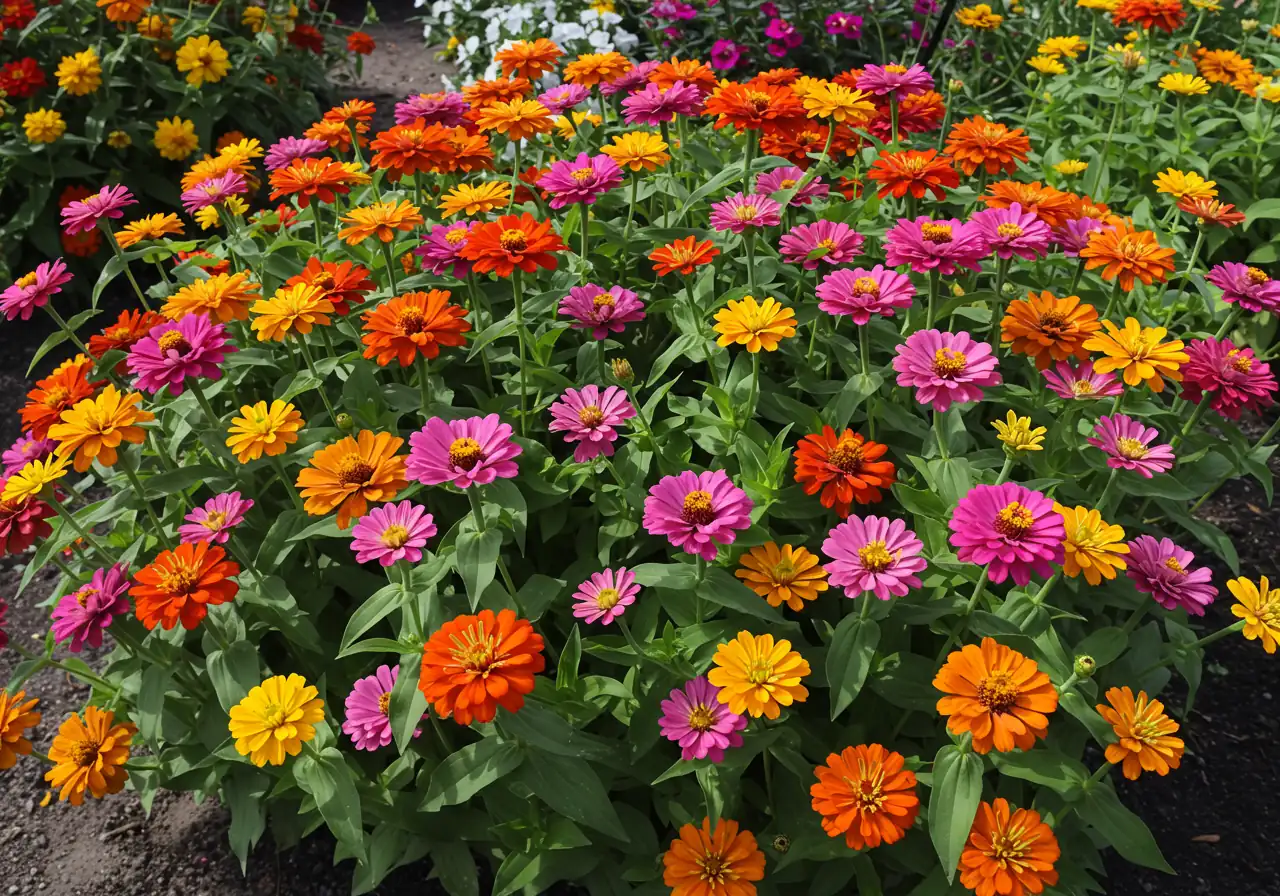
Here are a few favourites that respond beautifully to deadheading in our Ottawa area (Zone 5a/5b) climate:
Petunias (Annual)
Absolute flower factories! Removing faded blooms prevents seed pods and keeps them pumping out petals. Pinch or snip off the spent bloom and the little swelling behind it.
Marigolds (Annual)
Cheerful and tough. Snipping off old flowers keeps them tidy and encourages branching for even more blooms until frost. Follow the stem back to the first leaves and snip or pinch.
Zinnias (Annual)
Bold and beautiful. Deadheading is crucial to keep them focused on blooming, not seed-making. Use snips for thicker stems, cutting back to just above leaves or new buds.
Roses (Repeat-Blooming Varieties)
Classic beauties. Deadheading encourages the next flush of blooms faster and keeps the plant clean. Snip the stem above the first leaf with five leaflets.
Salvia (Perennial types)
Spiky purple bee magnets. Removing the faded main flower spike can encourage a second, smaller flush. Cut the entire spent stalk down to the base foliage.
Coreopsis (Tickseed - Perennial)
Sunny daisy-like flowers that bloom for ages. Deadheading keeps them prolific and prevents a messy look. Snip off individual faded flower stems back to a larger stem or foliage.
Choosing the right plants is just as important as choosing the right soil or mulch; making smart choices during expert material selection guidance sets your garden up for success. Beautiful, well-maintained flower beds really pop against a healthy lawn, maybe even one refreshed with reliable sod installation services. Proper care can lead to stunning garden transformations.
Keeping up with deadheading, especially during peak season across a larger property in areas like Nepean or Barrhaven, can feel like a chore. If you find yourself short on time, remember professional help is available. Whether it's targeted assistance or a broader scope like a comprehensive city garden clean-up service, options exist. For those in more rural settings like Marionville, dedicated local help such as a Marionville specific garden clean-up service can make all the difference. Always feel free to review our service approach detailed in our straightforward terms and conditions.
So go ahead, play favourites with these deadheading darlings! A little snip here and there makes a massive difference in keeping your Embrun-area garden vibrant and beautiful all season long.
Level Up Your Deadheading: Pro Tips & Eco-Friendly Practices
Okay, you've mastered the basic snip and pinch – high five! Ready to become a true deadheading ninja and make your gardening practices even kinder to our lovely Ottawa environment? Let's level up with some pro tips and eco-friendly strategies that folks in green-minded communities like Kars or Vernon would appreciate.
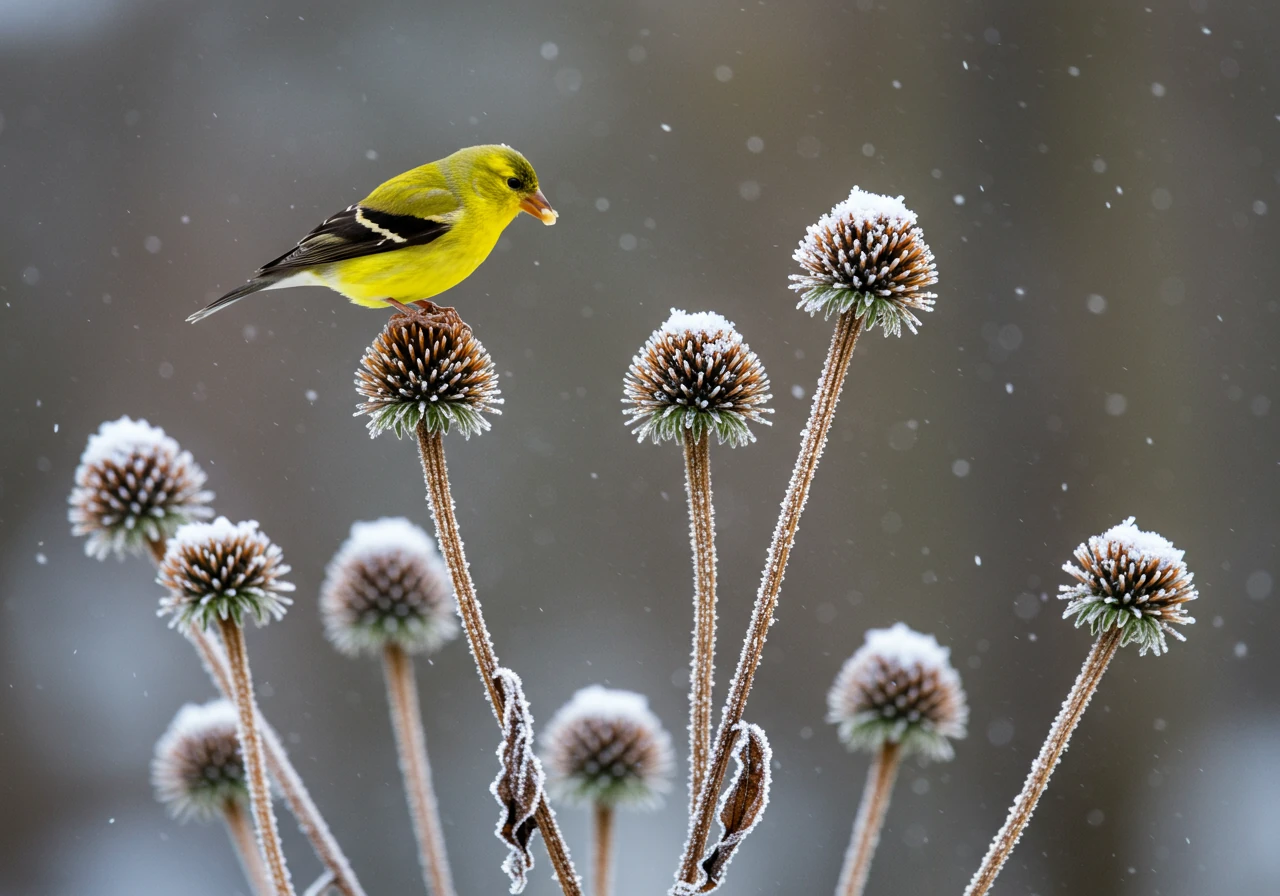
1. Be Selectively Savvy (Not Everything Needs the Snip!)
While we love encouraging more blooms, sometimes it pays to *pause* before you prune. Later in the season (think late summer/fall), consider leaving the faded flower heads on certain plants like Coneflowers (Echinacea), Black-Eyed Susans (Rudbeckia), Sedum, and ornamental grasses.
- Why? Those seed heads provide crucial winter food for birds like finches and add beautiful structure and interest to your winter landscaping. It's a win-win: natural bird feeder and visual appeal! You're basically creating a tiny nature buffet. Knowing which plants offer these benefits comes with experience, often part of what you get with expert garden maintenance. You can read more about local plant choices on resources like the Master Gardeners of Ottawa-Carleton website.
2. Compost Power: Turn Waste into "Black Gold"
Don't just toss those spent blooms in the green bin (unless they're diseased!). Healthy deadheaded flowers and stems are fantastic additions to your home compost pile.
- How? They break down beautifully, adding organic matter back into your soil. This enriches your garden beds naturally, reducing the need for chemical fertilizers. *Important caveat:* Avoid composting diseased plant parts (like flowers with powdery mildew or fungal spots) as the spores might survive the composting process and spread later. If you're dealing with large amounts of garden debris, especially after a big seasonal tidy-up, services like a Metcalfe property cleanup service or, further afield, a Marionville property cleanup service often include responsible green waste disposal. The City of Ottawa's website also has tips on yard waste.
3. Water Conservation Connection
Did you know deadheading can subtly help save water? When plants focus energy on making seeds (their mission after flowering), they draw more water and nutrients.
- The Link: By snipping off spent blooms, you stop that intense seed-making frenzy. The plant redirects its resources (including water!) towards producing more flowers or maintaining healthy foliage instead. It’s a small but sustainable way to manage resources, especially during drier Ottawa summers. This responsible resource management is often a core principle behind a professional city property cleanup service as well. Consider also a new garden install with drought-tolerant plants.
4. Don't Forget the Shrubs!
Deadheading isn't just for annuals and perennials. Some flowering shrubs also appreciate having their spent blooms removed *soon after flowering*. Think Lilacs, Rhododendrons, and Azaleas.
- The Benefit: Removing the old flower clusters (before they form seed pods) encourages the plant to put energy into setting buds for *next* year's flower show, often resulting in more prolific blooms. Just be careful not to prune off next year's buds – snip just below the faded flower cluster. Need help with larger plants? Our City Yard Cleanup Service can assist.
By incorporating these thoughtful practices, you’re not just getting more flowers; you're actively contributing to a healthier, more sustainable garden ecosystem right here in the Ottawa area. By composting clippings or leaving seeds for birds, you're nurturing the local environment – a thoughtful action almost like thanking us for the eco-friendly tips! Local resources like the Ottawa Horticultural Society can provide further inspiration. Happy, smart gardening!
Quick Snippets: Your Key Deadheading Takeaways
Feeling a little overloaded with info, like you've just tried to stuff one too many geraniums into a window box? No worries! Here are the super-quick highlights to remember for your Ottawa gardening adventures. Think of this as your easy-peasy cheat sheet for more blooms and less blah:
| Key Takeaway | Why It Matters | Quick Tip |
|---|---|---|
| Snip for Blooms, Not Seeds | Redirects plant energy to making more flowers instead of seeds. | Remove faded flowers AND the base where seeds form. |
| Pinch Soft, Snip Tough | Uses the right technique for the stem type, preventing damage. | Fingers for Petunias, snips for Roses/Zinnias. Cut above leaves/buds. |
| Little & Often is Key | Prevents overwhelming cleanup, keeps garden consistently tidy. | Check plants every few days in peak summer. Quick snips are easy! |
| Know Your Bloomers | Focus effort on plants that benefit most (annuals, repeat perennials). | Leave late seed heads (Coneflower, Sedum) for birds/winter interest. |
| Part of Tidy Landscaping | Keeps plants looking neat and contributes to overall yard appeal. | Integrate with watering or weekly garden walk. Consider help for large areas (Ottawa property cleanup service). |
Keep these tips handy, and you’ll be enjoying a more vibrant, flower-filled garden without feeling chained to your pruning shears! Consider our Marionville yard cleanup service or Marionville property cleanup service if you're in the area. Happy gardening!
Your Ottawa & Embrun Deadheading Questions Answered (FAQ)
Great question! Keep deadheading annuals like petunias right until frost takes them – get every last flower! For perennials like Coneflowers or Sedum, you can stop in late summer/early fall (late August/September). Leaving these seed heads provides winter interest for your landscaping and food for birds braving our chilly Ottawa winters.
Absolutely! While some perennials bloom reliably, deadheading often encourages a *second*, sometimes smaller, flush of flowers you'd otherwise miss. It also keeps the plants looking much tidier and directs energy into root and foliage growth for next year, rather than seed making. Think of it as maximizing the colour punch in the time we have! Consider a city garden maintenance service for ongoing care.
Indirectly, yes! Deadheading reduces the energy a plant spends on seed production. This frees up resources for root development and overall health, helping it better cope with less-than-ideal conditions like heavy soil. Healthy plants start below ground, which is why good soil preparation techniques are also vital for thriving gardens in our region.
Play it safe – don't compost diseased blooms! Put them straight into your municipal waste (garbage, not green bin usually) to avoid spreading the problem. Healthy clippings are great for compost, but diseased ones can contaminate your batch. Keeping things clean helps prevent future issues needing a broader Ottawa garden clean up service.
Totally understandable! Focus on the plants that give the most bang for your buck – prolific annuals and repeat-blooming perennials. Don't stress about getting every single faded flower. If it's truly too much, consider focusing on lower-maintenance plants or getting help. A specific Metcalfe garden clean up service could tackle the deadheading or other garden chores for you.
Think of deadheading as quick, regular maintenance, not a huge project. Integrate it into your watering routine or a weekly garden walk. Just 10-15 minutes a couple of times a week makes a huge difference! If the overall task list feels daunting, remember that a comprehensive city-wide yard cleanup service can handle various garden and lawn tasks to lighten your load.
Keep Those Embrun Blooms Coming! Ready to Get Snipping?
So there you have it – the simple secret to keeping your garden colourful and vibrant all season long! Deadheading isn't some complicated gardening chore; it's your quick ticket to encouraging more flowers and keeping your plants looking tidy and healthy. Think of it as giving your blooms a little high-five for a job well done, while gently asking them to keep the party going. A few minutes here and there can make a huge difference to your landscaping appeal.
Ready to give it a whirl? Grab your snips (or just use your fingers!) and spend a few minutes this week rescuing those fading flowers. See for yourself how this little bit of attention pays off with prolonged colour.
Of course, we get it – life gets busy! If adding one more thing to your gardening list feels like too much, or if you'd rather have experts handle your garden maintenance in Embrun, Russell, Winchester, or across the Ottawa area, we're here to help! Contact us today for a friendly consultation or to book our wide range of services.
What are *your* favourite flowers to deadhead for maximum bloom? Share your tips and successes with us!
